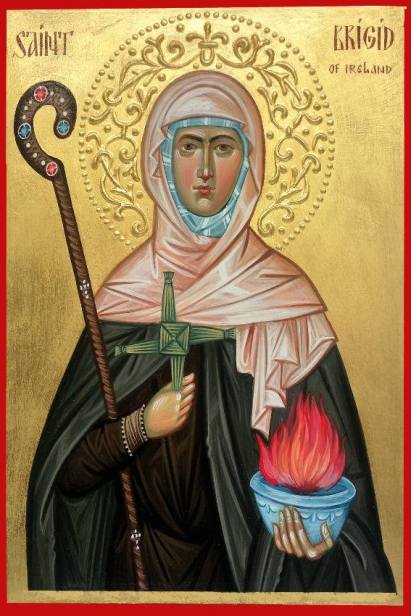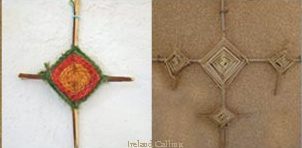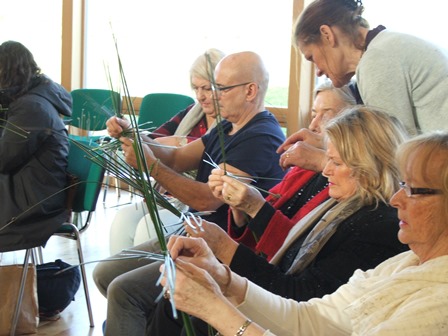My search for Tibetan Namkha-equivalent art in world cultures takes me to Ireland today.
It’s St. Brigid’s Day, celebrated each year on 1 February in remembrance of Brigid of Kildare, a Christian patron saint of Ireland.

The Goddess of Brigid, her pagan festival Imbolc and the rushen cross are all old folk tradition, most probably of Celtic origin, that was incorporated into Christianity.
The cross has become a symbol of Ireland, similar to the shamrock and harp, the four-armed cross being the most recognizable, though there are regional varieties, such as the three-armed cross.
The materials vary from rushes, reed, straw to wood, grass, hay, goose quills, wire and fabric.
In all its variety, Brigid’s cross is very similar in design and function to the Tibetan Namkha and the Eye of God (Ojo de Dios) of the Huichol indigenous culture of Mexico.

Varieties of Brigid’s cross Source
Tibetan namkha
The cross seems to have become no more than a mere symbol of a culture today. We’re told that, historically, the crosses were hung up in homes and animal sheds. Newlyweds and those with a new home would commonly receive a cross as a gift for protection and good luck. There’s probably a lot more depth to the tradition than what can now be recollected.

In Ireland, the tradition is honoured today by doing the Brigid’s cross weaving.

Brigid’s cross weaving tutorial:
The featured photo pictures His Holiness the Dalai Lama with a Brigid’s cross presented to him.
Do you know more about this tradition? Please, share!
Sources:
Solas Bhríde Centre and Hermitages
Follow my blog for more interesting research on the world’s woven crosses coming up: Huichol, Bon Tibetan, Nepalese Silamsakma and more …



